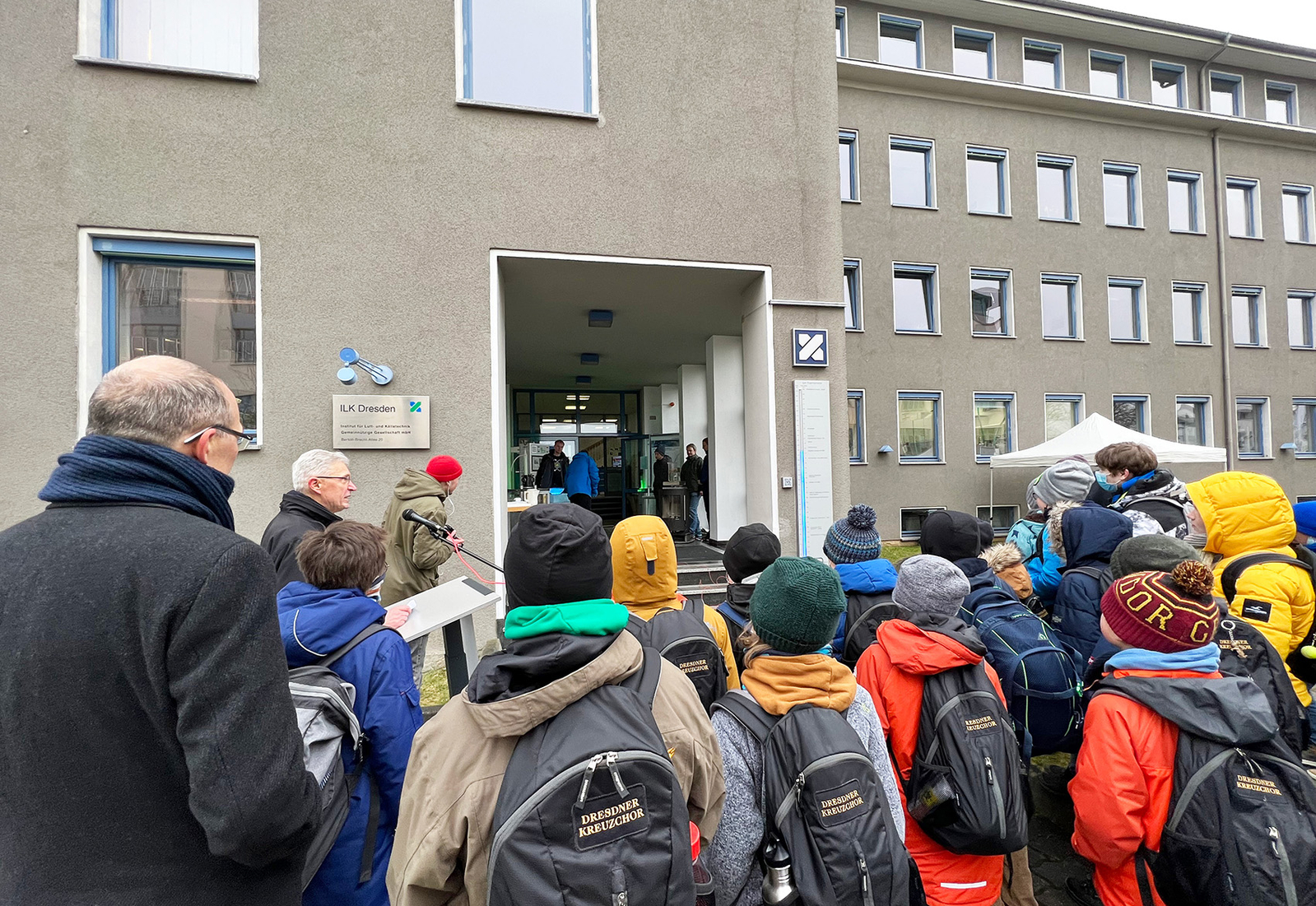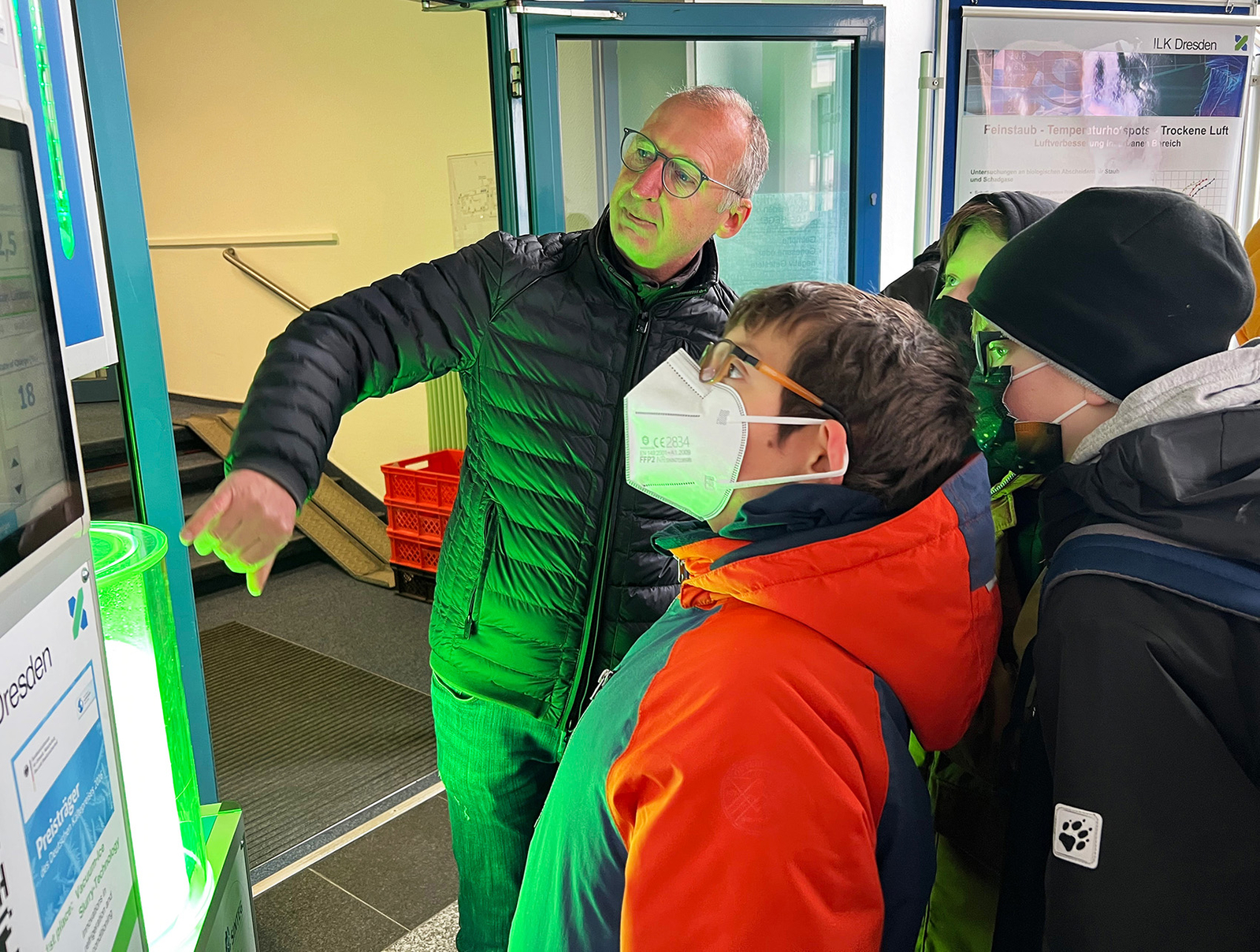What is so special about a classical thermometer, when you can read the temperature on your smartphone anytime? For about 350 years we have had thermometers with glass tubes and a liquid inside. However, the new 2.5 meters high thermometer on the outside wall of the ILK Dresden is something special. Its temperature spectrum reaches from +100°C to -273°C! Today, Dresden-based scientists demonstrated in different experiments before the eyes of the guests invited, how high or low the blue LED lights can rise or fall. Together with the students of the Kreuzgymnasium and the Chief Officer of Business Development Dr. Robert Franke, ILK’s Managing Director Prof. Uwe Franzke is revealing the thermometer today.
The thermometer on the façade of the ILK Dresden offers quite a lot of background information. Among the keywords are the following: +45°C heat pump, -25°C lowest temperature in Dresden, -75°C storage of blood plasma, -89°C officially lowest temperature in Antarctica, -183°C liquid oxygen as rocket fuel or the very popular -7°C soft ice cream. Moreover, a QR code leads to the website of the ILK, where further information about the temperatures can be found as well as about the projects of the ILK in this temperature spectrum. ILK systems and components can be found all over the world. The bandwidth of research and development reaches from -273°C up to about +1.000°C. Among these are examinations concerning the storage of hydrogen, tests around the freezing of human cells, efficiency measurements of heat pumps, checks of flow conditions in the Transrapid, the evaluation of air quality in the chancellery, process development for clean room air without COVID-19 viruses, compatibility evaluation of different materials in the circuits of car ACs as well as the development of options for using the sun for cold production.

In the heart of Dresden, the institute has been offering versatile work places to several hundred scientists for almost sixty years. “This local connectedness inspired us to offer more insight into refrigeration and air-conditioning technologies.“, says Prof. Franzke. He continues: „It is especially important to us to reach principals and teachers to win over students for natural sciences, and to demonstrate to them in practical examples, which opportunities they have in MINT subjects and especially the contributions they can make to a future worth living in.“
Sometimes we hear questions such as: What do we need low temperatures for?
The answer is simple: Modern life as we know it today would not be possible without refrigeration technology. It starts with the fridge or the freezer. In medical science we need the cold for the visualization of the inside of the body, the AC in our cars does not only provide comfort but also safety, and last but not least, the heat pump is an indispensable component of the energy transition. Without cryogenics, there is no basic understanding of the formation of our universe. The clean room production of chips – also for our smartphones – presupposes exactly defined temperatures in the production facilities.
The size of the thermometer: 2.5 meters or 75 kilometers?
2.5 meters is not small, but in relation to the universe, 2.5 meters is tiny. The temperature of the plasma on the inside of the sun is 15.000.000 °C. If we had developed a thermometer with a spectrum like this, and used the same scale, the thermometer would have been 75 kilometers long. The ILK thermometer will be an interesting attraction in Dresden.



















